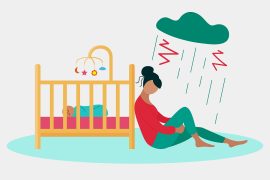Pregnancy brings about numerous physiological changes, and one of the most noticeable for many women is the increase in hair growth. Thanks to hormonal changes, pregnant women may find themselves battling with unwanted hair in areas like the abdomen, face, and legs. This article delves into understanding hair growth during pregnancy and offers a comprehensive guide to the safest and most effective hair removal methods for expecting moms.

Understanding the Hair Growth Spurt
Hair Growth Cycle: Hair grows in cycles, which includes:
- Anagen Phase: The active growth phase, where cells in the hair bulb rapidly divide, leading to hair growth. Typically, 90% of hair is in this phase at any given time.
- Catagen Phase: A transitional phase where the hair stops growing and detaches from the blood supply.
- Telogen Phase: The resting phase, where hair falls out and new hair begins its growth phase. Normally, around 10% of hair is in this phase.
- Pregnancy Hormones Play a Role: One of the main reasons pregnant women notice a hair growth spurt is because of increased estrogen levels. Estrogen prolongs the anagen phase, meaning fewer hairs enter the telogen phase, leading to less hair fall and an appearance of thicker, fuller hair.
- Location of Growth: While many women enjoy the added volume on their scalp, some also observe hair growth in undesired areas, such as the face, abdomen, and chest.
- Nutrient Boost: During pregnancy, there’s an increased intake of prenatal vitamins and nutrients, which can also contribute to healthier and more robust hair growth.
- Postpartum Hair Loss: After childbirth, estrogen levels drop, pushing more hairs into the telogen phase. As a result, many women experience increased hair shedding, often referred to as “postpartum hair loss.” This phenomenon usually starts a few months after delivery and can continue for several more months before returning to the pre-pregnancy hair growth cycle.
- It’s Temporary: The hair growth spurt and subsequent postpartum hair loss are typically temporary. Most women will return to their regular hair growth cycle within a year after giving birth.
- Other Factors: While hormones play a significant role, other factors can influence hair growth during pregnancy. These include genetics, overall health, and other hormonal changes.
- Not Universal: It’s essential to understand that every woman’s experience is unique. While many report a noticeable hair growth spurt during pregnancy, others might not see any significant change.
Sensitive Skin During Pregnancy
Many women find that their skin becomes more delicate and reactive when they’re expecting. This sensitivity can affect the choice of hair removal method.
Hair Removal Methods: What Works Best?
Depilatory Creams
- Description: These are creams designed to break down hair at the skin’s surface.
- Pros: A pain-free and quick method.
- Cons: Some creams contain chemicals that could irritate sensitive skin.
- Safety Tip: Opt for products labeled safe for pregnant women, and always perform a patch test first. Consult your doctor if unsure.
Shaving
- Description: The act of cutting hair close to the skin’s surface using a razor.
- Pros: Quick, painless, and safe.
- Cons: The hair grows back quickly. There’s a potential for nicks, especially in hard-to-reach areas.
- Special Note: For tricky areas like the bikini line, use a mirror and exercise caution.
Waxing
- Description: A method where warm wax is applied to the skin and then swiftly pulled off, removing hair from the roots.
- Pros: Offers longer-lasting results than shaving.
- Cons: Can be painful, especially for sensitive skin.
- Safety Tip: Make sure the salon you visit maintains impeccable hygiene.
Laser Hair Removal
- Description: This method uses lasers to target and damage hair follicles, preventing or reducing future growth.
- Pros: Results are long-lasting.
- Cons: Not enough research on its safety during pregnancy, so it’s generally not recommended.
- Safety Tip: If considering this pre or post-pregnancy, consult with a dermatologist and your OB-GYN.
Tweezing/Threading
- Description: These are techniques best suited for small areas, where hair is removed from the root.
- Pros: Offers precision.
- Cons: Can be time-consuming for larger areas.
- Special Note: These can be particularly useful for facial hair during pregnancy.
Choosing Your Best Hair Removal Option
- Area Concerns: The part of your body from which you’re removing hair will often dictate the best method. For example, threading might be ideal for facial hair, while waxing or shaving might be better for legs.
- Sensitive Skin: If you’ve noticed heightened sensitivity, opt for gentler methods, and always perform a patch test for any creams or waxes.
- Duration of Results: Consider how frequently you’re willing to repeat the process. Waxing, for instance, provides results that can last several weeks, while shaving might require upkeep every few days.
Factors to Keep in Mind
- Consultation is Key: It’s crucial to have open communication with your healthcare provider when considering any hair removal method. They can provide guidance tailored to your specific situation and any health concerns that may arise during your pregnancy.
- Read Product Labels: Especially when considering depilatory creams or other hair removal products, always read labels carefully. Some might contain chemicals that aren’t recommended during pregnancy.
- Skin Reactions: Pregnancy can sometimes cause your skin to react differently than it did before. What once might have been your go-to hair removal method might now cause skin irritations. Always monitor your skin’s response to any treatment.
Alternative Methods
While the methods mentioned above are the most common, there are other, less conventional means of hair removal that some pregnant women might consider:
Epilation:
- Devices that mechanically grasp multiple hairs simultaneously and pull them out.
- Pros: Longer-lasting results than shaving.
- Cons: Can be painful, similar to waxing, and may cause ingrown hairs.
- Safety Tip: Use on a low setting to begin with, and avoid over-irritating the skin.
Natural Hair Removal:
- Some women opt for homemade or natural solutions like sugaring.
- A mixture of sugar, lemon, and water is heated to make a paste. This paste is put on the skin and then taken off, pulling out hair from the roots.
- Pros: Natural and chemical-free.
- Cons: Requires a specific technique for effective results. It can be sticky and messy.
Postpartum Hair Changes
It’s essential to note that the surge in hair growth during pregnancy might be temporary. After childbirth, women frequently experience excessive hair loss, which is a response to the additional hair they retained while pregnant. This phenomenon is quite common and occurs due to hormonal changes in the body. After giving birth, your hair growth will return to normal, so don’t worry if it seems excessive right now.
In Conclusion
While the surge in hair growth during pregnancy can be daunting, there are numerous safe and effective methods to manage it. Pregnant women can safely manage unwanted hair growth. They can do this by understanding their body changes and the choices available to them during this special time.




